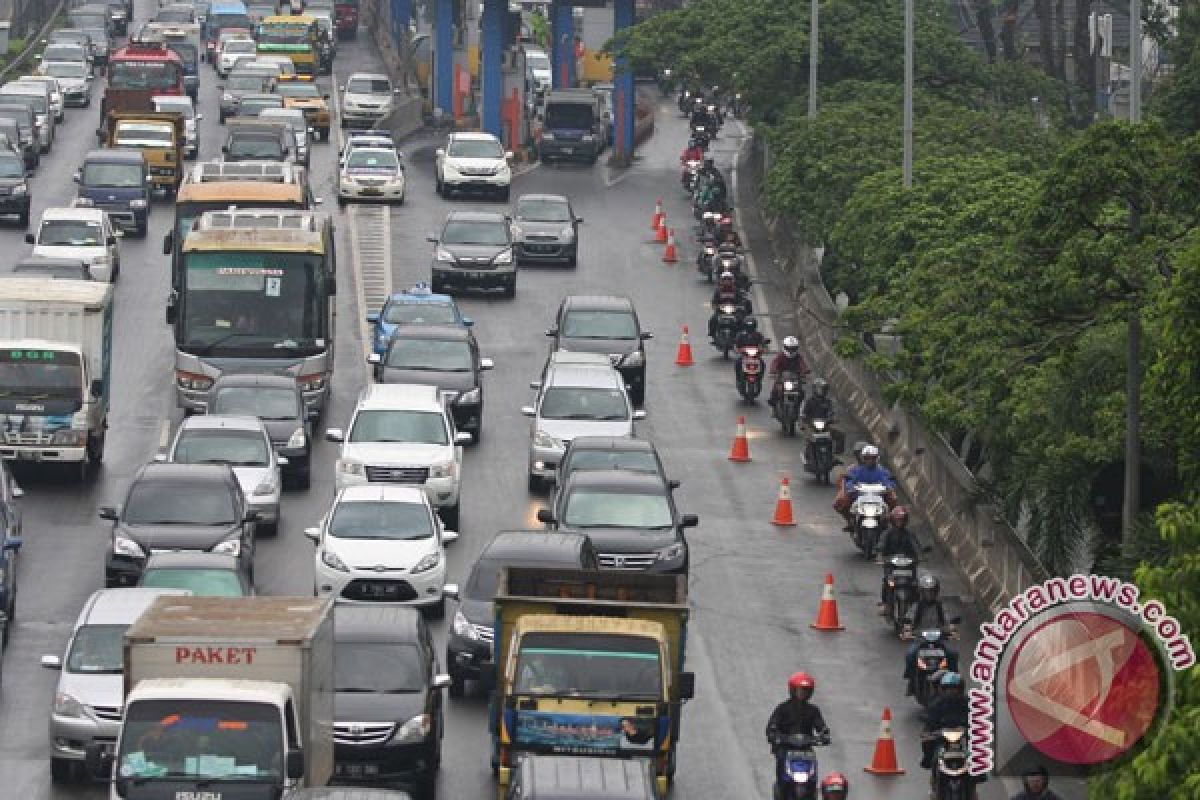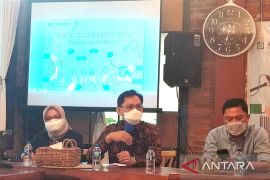Some motor bikers drive carelessly and do not hesitate to break laws such as driving in the opposite direction on the roads, threatening other lives and their own lives particularly.
The National Polices data showed that in 2012, there were 109,038 traffic accidents that claimed 25,131 lives, or 81 deaths per day, or three deaths per hour. In Jakarta, there were 5,959 traffic accidents with 616 deaths in 2013.
Around 60 road accidents involved motorcycles in this country. According to media reports, there are now more than 60 million motorcycles on Indonesias roads, compared with eight million cars.
The United Nations has designated the World Day of Remembrance for Road Traffic Victims in the third week of every November, and
a Decade of Action for Road Safety, 2011-2020, with the target of saving 5 million lives.
Joining other countries in supporting the Decade of Action for Road Safety, President Susilo Bambang Yudhoyono flanked by First Lady Any Yudhoyono launched a National Traffic Safety Pioneering Movement in Jakarta on January 26, 2013.
Yudhoyono called on all community components to participate in the movement aimed at preventing or reducing traffic accidents, particularly the number of traffic deaths in the country.
"Let us be serious in all our efforts to prevent or reduce significantly traffic accidents. All are responsible and must be involved and do their utmost," he said.
The head of state said almost every country in the world has launched a similar road traffic safety movement, and Indonesia should not be left behind in this case.
National Police Chief General Sutarman on the occasion quoted data of the World Health Organization (WHO) that showed that 2.2 million people die every day in the world due to road accidents while 50 million others suffer serious injuries and permanent physical handicaps.
The number is bigger than war victims. During the eight year Gulf war only 1.2 million or around 150,000 a year are killed, Sutarman said quoting the WHO record.
General Sutarman said in Indonesia more than 25,000 people were killed in traffic accidents in 2013.
In view of that he said the police continued increasing efforts to prevent and reduce traffic accidents by among other campaigning about road safety at schools and campuses as well as improving the mechanism for issuing driving license.
At the initiative of the National Police, the road safety movement on Sunday was also launched simultaneously throughout Indonesia, such as in Serang (Banten Province), Denpasar (Bali), Yogyakarta, Makassar (South Sulawesi), Palembang (South Sumatra), Padang Panjang and Bukittinggi (West Sumatra), Banda Aceh (Aceh Darussalam), North Barito (South Kalimantan), Sukabumi and Bogor (West Java), Mataram (West Nusa Tenggara), Batam (Riau Islands), Kendari (Southeast Sulawesi), East Kutai (East Kalimantan), and Pontianak (West Kalimantan).
Deputy Governor of Banten Rano Karno and Banten Police Chief Brigadier General M Zulkarnain officially launched the road safety movement and at the same time designated the second and fourth Sundays in a month as car-free day in the Serang Square area and main road.
"Be pioneers in traffic safety and make safety as a necessity," Rano Karno, who was once very famous actor, said.
In Denpasar, the Bali Provincial Police Offices Traffic Director Senior Commissioner Beno Louhenapessy said Indonesia was ranked fifth in the worlds traffic accident deaths based on the World Health Organization (WHO) data.
In Bali, there were 2,730 traffic accidents in 2012 claiming 601 lives, and in 2013 there were 2,172 traffic accidents with 564 deaths, he said during the road safety movement launch which was officiated by Bali Governor Made Mangku Pastika.
In Yogyakarta, believing that road safety should be introduced at the earliest age possible, a number of elementary school students were involved in the movement which was officially launched by its mayor, Haryadi Suyuti.
"Road safety should become part of our culture. We must always be careful when we are on the road," the mayor said.
Head of the Transportation Ministrys Research and Development Department Elly A Sinaga in a press statement said electronic or automated traffic enforcement (e-enforcement) techniques will help promote road safety and reduce traffic accidents.
"The e-enforcement application and traffic technology innovation must be realized for the road traffic safety," Sinaga said.
Indonesia has the largest number of motorcycles in the world and around 70 percent of the countrys road traffic accidents involved motorcycles, she said.
The e-enforcement techniques will encourage motor bikers to be more disciplined and better facilitate traffic monitoring by police.
The Indonesian Traffic Watch (ITW), however, stated that the national road safety movement must be supported by properly functioning infrastructure.
"The launch of the national movement for road traffic safety must not stop in ceremonial activities for image building," ITW Presidium Chairman Edison Siahaan said in a statement on Sunday.
Traffic accidents could happen because of various factors, not merely due to human error, he said, adding that the factors include damaged roads and unworthiness of vehicles.
"Dont dream that safety could be achieved only by urging the people," he stated.
The government must evaluate the quality and quantity of a number of roads that have been damaged by the recent floods, he added.
He also called on the police to be more selective in issuing driving licenses, and the transportation ministry to intensify the checking and testing of vehicle worthiness.
Besides, the National Police must also be able to prepare its officers to have a mentality of pioneer in traffic safety, he stated.
According to the data of WHO, in 2010, there were 1.24 million deaths worldwide from road traffic crashes, roughly the same number as in 2007.
Around 59 percent of those who were killed in road traffic crashes were between the ages of 15 and 44 years, and 77 percent were male.
Only 28 countries, covering seven percent of the worlds population, have comprehensive road safety laws on all five key risk factors: drinking and driving, speeding, and failing to use motorcycle helmets, seat-belts, and child restraints.
"Political will is needed at the highest level of government to ensure appropriate road safety legislation and stringent enforcement of laws by which we all need to abide." WHO Director-General Dr Margaret Chan.
The pace of legislative change needs to rapidly accelerate if the number of deaths from road traffic crashes is to be substantially reduced, according to the Global status report on road safety 2013: supporting a decade of action, published by WHO last year.
The Global status report on road safety 2013 presents information from 182 countries, accounting for almost 99 percent of the worlds population or 6.8 billion people.
Launched on 11 May 2011 by governments across the world, the Decade of Action seeks to build road safety management capacity in countries; improve the safety of roads and vehicles; enhance the behaviour of all road users; and strengthen post-crash care.
(F001/A014)
Reporter: Fardah
Editor: Jafar M Sidik
Copyright © ANTARA 2014











